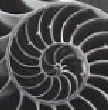
Problems for
Intermediate Methods in Theoretical Physics
Edward F. Redish
 |
Problems for Edward F. Redish |
In our last class on using Fourier Series, we showed that for the harmonic oscillator equation

with a driving function, F(t), that the particular solution of the damped harmonic oscillator took the form

where

is the Fourier transform of the driving term.
Use contour integration techniques to evaluate this integral assuming that the F.T. of F is an analytic function of ω in the upper half of the complex ω plane and that it vanishes on the circle at infinity.
Solution
|
Since F(ω) vanishes on the circle at infinity, we may write the integral for the particular solution as a contour integral:
where C is the contour as shown in the figure at the right (after R is taken to infinity). |
 |

This allows us to write our integral as:
|
The countour can now be divided into two as in the picture at the right so:
Since we have expressions for z1 and z2 and for the FT of F, we can plug in and get our result.
|
 |
| University of Maryland | Physics Department | Physics 374 Home |
|---|---|---|
 |
 |
 |
Last revision 13. December, 2005.